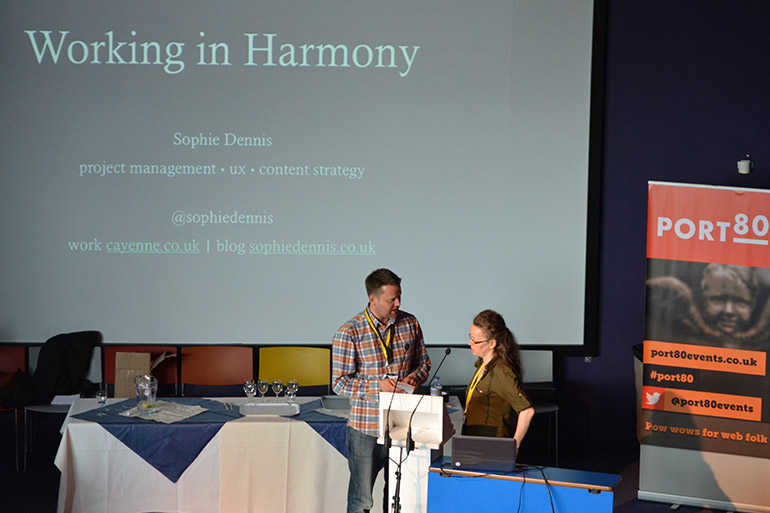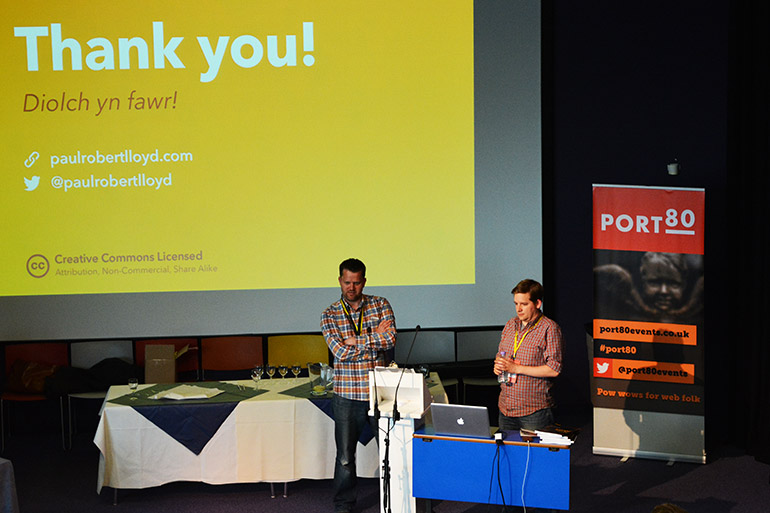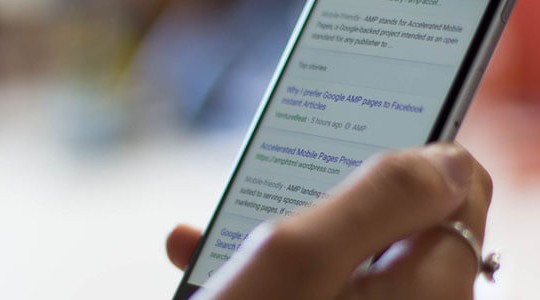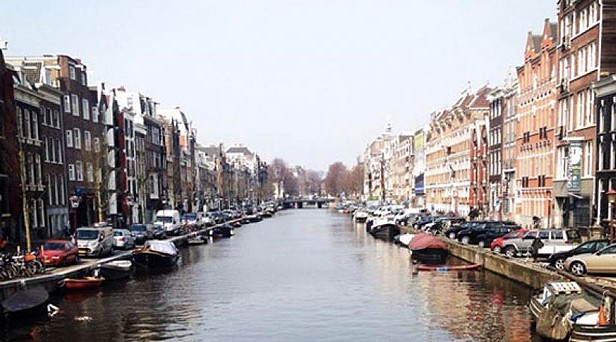Three members of the Cyber-Duck team attended the Port80 Conference in Newport, Wales on Friday the 10th of May. The team learned, shared and networked alongside other leading British web designers and front-end developers. Find out what they got up to.
Despite having a rough start with extreme railway delays, Andrew Pairman, Benjamin Maugain and I managed to arrive safe and sound at our destination the night before the main event. The morning started promptly with registration at the City Campus of the University of Wales. All 100+ attendees were welcomed to the venue with coffee and freebies from sponsors. After a brief wait, we were asked to enter the A16 room which had a great view of the Usk river.

The conference attracted designers and developers from across the UK and Europe.
The talks and what we learnt
Here we have listed the talks and what we thought were the key insights from each session.
Responsive Design at The Guardian
Matt Andrews started the event off with his talk about "Responsive Design at The Guardian". Matt explained the reasons for The Guardian to go responsive and showed a few techniques and tools used on the new website. He also pointed out how The Guardian benefit from early public releases and crowd beta testing and the use of an Agile methodology to release frequent small changes rather than large updates.
Cyber-Duck’s UX designer, Andrew Pairman said that building a "Core Experience" was one of the main lessons learned from this talk. We need to focus on delivering key content that users need to access in its simplest form, and loading it first. We need to start considering other factors of mobile devices and not just screen size, asking ourselves questions like: Does the user only have 10% battery? Are they on an EDGE or 4G connection? Are they on a slow or busy Wifi network? If we can detect these variables we can enhance the core experience with JavaScript, higher quality images and web fonts if the device can deliver these without causing the user any delay.
On this note, Benjamin, an expert web developer from Cyber-Duck, said that one of the key themes of this talk was the importance of improving security practices within the workflow of a project, to prevent issues further on in the build. For instance, by ensuring separation between layers of code and keeping technical functionalities apart it is easier to identify small issues that aren't likely to stall a whole project or website (generally speaking and in terms of security).
How to Discover Your Inner Superhero
Rachel Shillcock and Benjy Stanton followed with some advice about finding your inner superhero to become a better designer and developer, and some examples on how to use animation on the web to enhance usability. Andrew's key take away point here was that the best designers now use animation as a great solution to communicate more without adding any extra content.
Making Mobile Sites Faster
Before the lunch break, Andy Davies took the stage to give a very detailed presentation about making mobile websites faster. He brought to attention some interesting facts, like a high percentage of mobile traffic comes from in-app browsers, which are considerably slower and less capable than main mobile browsers, and how the smart use of a cache can significantly improve loading times and reduce HTTP requests.
The point we picked out was that following "rules" strictly to increase a website's speed doesn't always work, and it's better to use tools to measure the speed of website assets and then make decisions and changes based on that and other UX factors. We need to consider all the parameters to optimise performances, not only the weight of different elements.
Everybody Technology - The Power and the Promise
Robin Christopherson gave probably the most inspiring talk at the event, explaining how technology has helped him to "see" and interact with the world in ways not before possible for a blind person. He also showed how accessibility features can be used in technical products to be inclusive of people with disabilities.
Cyber-Duck Web Developer, Benjamin picked up the point that as a web producer, if you simply validate the Web Content Accessibility Guidelines (WCAG), this is not enough to make a fully accessible web site. User testing is the only way to know for sure that your website's accessibility is UX optimised.

Sophie Dennis and Joel Hughes discuss harmony in web design.
Working in Harmony
Another interesting talk came from Sophie Dennis, about the close relation between music harmony and web design. She not only talked us through the similarities of both subjects, but literally made the audience get up their seats and dance to make her point.
Practical JavaScripting
After the afternoon break, Jack Franklin started switching the mood to a more technical one with his talk about Practical JavaScripting. Despite a couple of issues with the slides, the talk was full of resources and good advice on JavaScript.
One of the most important general points which Benjamin identified was that when working with JavaScript, we should automate the repetitive tasks, even the smallest ones to progress more efficiently through the workflow, using the console and tools like Grunt.JS, a fantastic tool for this.
This is For Everyone
The last talk of the day was Paul Lloyd's "This is for Everyone". With notes on performance, the true nature of the web, and some techniques and ideas about responsive images.
Benjamin and Andrew both agreed that the major point about this talk was that it is vital to always be mindful about the image sizes that we use in responsive web designs. Where the average page size is continually increasing, content managers need to categorise images into 'informative' and 'decorative', serving the informative images at a higher quality

Paul Lloyd answering takes questions at the end of his insightful talk.
The event closed after a Q&A panel led by Cole Henley where all participants had the opportunity to ask questions to the speakers in an open discussion.
Overall, the day was a fantastic success. We got to meet some great people and pick up some excellent tips and insights. To sum it all up, the current trend is that as designers and developers, we are all moving in the right direction focussing on making a better web for everybody. If we focus on creating a "Core Experience", we deliver key content that users need to access in its simplest form and load it first.



